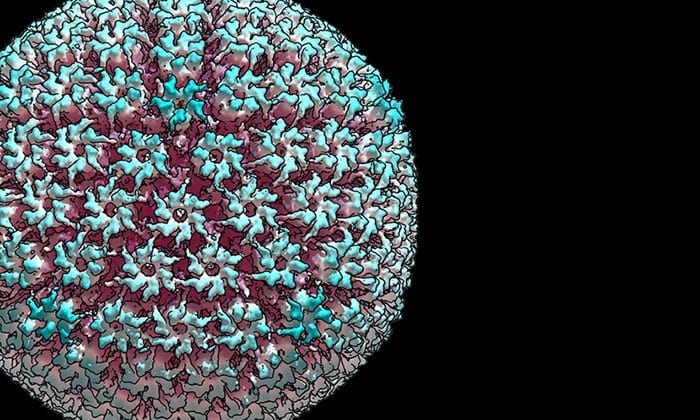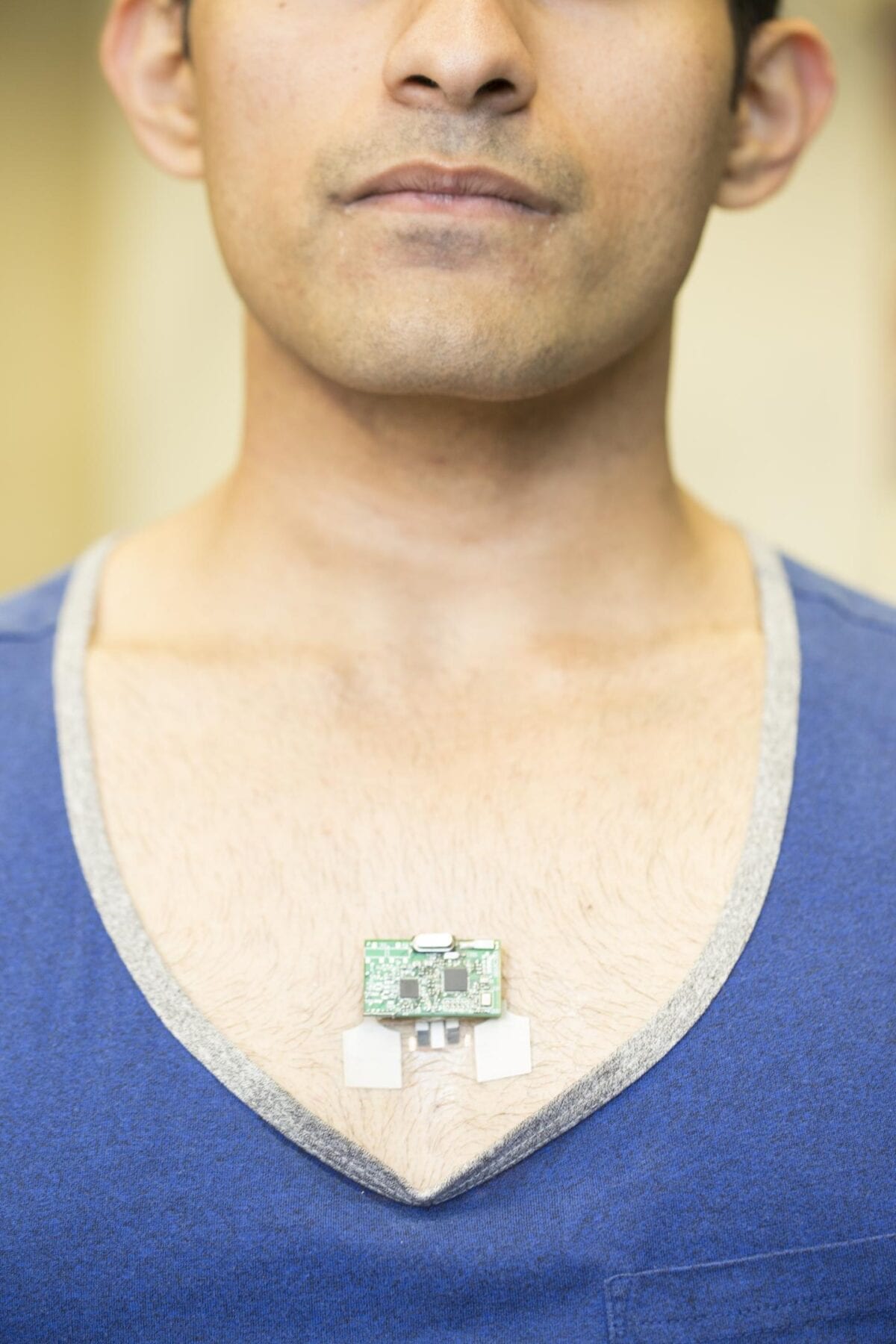
Scientists at The University of Texas at Austin have developed a new method to rapidly detect a single virus in urine, as reported this week in the journal Proceedings of the National Academy of Sciences.
Although the technique presently works on just one virus, scientists say it could be adapted to detect a range of viruses that plague humans including Ebola, Zika and HIV.
“The ultimate goal is to build a cheap, easy-to-use device to take into the field and measure the presence of a virus like Ebola in people on the spot,” says Jeffrey Dick, a chemistry graduate student and co-lead author of the study. “While we are still pretty far from this, this work is a leap in the right direction.”
The other co-lead author is Adam Hilterbrand, a microbiology graduate student.
The new method is highly specific, meaning it is only sensitive to one type of virus, filtering out possible false negatives caused by other viruses or contaminants.
There are two other commonly used methods for detecting viruses in biological samples, but they have drawbacks. One requires a much higher concentration of viruses, and the other requires samples to be purified to remove contaminants. The new method, however, can be used with urine straight from a person or animal.
The other co-authors are Lauren Strawsine, a postdoctoral fellow in chemistry; Jason Upton, an assistant professor of molecular biosciences; and Allen Bard, professor of chemistry and director of the Center for Electrochemistry.
The researchers demonstrated their new technique on a virus that belongs to the herpesvirus family, called murine cytomegalovirus (MCMV). To detect individual viruses, the team places an electrode — a wire that conducts electricity, in this case, one that is thinner than a human cell — in a sample of mouse urine. They then add to the urine some special molecules made up of enzymes and antibodies that naturally stick to the virus of interest. When all three stick together and then bump into the electrode, there’s a spike in electric current that can be easily detected.
The researchers say their new method still needs refinement. For example, the electrodes become less sensitive over time because a host of other naturally occurring compounds stick to them, leaving less surface area for viruses to interact with them. To be practical, the process will also need to be engineered into a compact and rugged device that can operate in a range of real-world environments.
Learn more: Making Virus Sensors Cheap and Simple: New Method Detects Single Viruses
The Latest on: Virus Sensors
[google_news title=”” keyword=”Virus Sensors” num_posts=”10″ blurb_length=”0″ show_thumb=”left”]
via Google News
The Latest on: Virus Sensors
- Phil Houston on Techniques to Identify Lies in Businesson April 26, 2024 at 7:07 am
Not many people think about interrogating senior executives and employees, and asking the right questions to figure out whether they're telling the truth about the business model. In this episode, we ...
- Swiftpoint Z2 review: The most customizable gaming mouse ever madeon April 26, 2024 at 3:54 am
The Swiftpoint Z2 is an exceptional gaming mouse with more customizable functionality than we've ever had before in a mouse. Playing with it is like a rite of passage -- like getting a bespoke ...
- Could Investing $15,000 in Axcelis Technologies Make You a Millionaire?on April 26, 2024 at 3:00 am
This company's equipment is quietly behind some of the world's biggest technological leaps -- and it's just getting started.
- AI Revolutionizes the Future of Foodon April 25, 2024 at 9:11 pm
Artificial intelligence (AI) finds its way into almost every aspect of Americans’ lives. At the end of February, there was a minor scandal regarding fast food burger giant Wendy’s tests with ...
- How immune cells communicate to fight viruses: New mouse model enables identification of chemokine producers and sensorson April 25, 2024 at 8:20 am
Chemokines are signaling proteins that orchestrate the interaction of immune cells against pathogens and tumors. To understand this complex network, various techniques have been developed to identify ...
- Yankees screwed again: It’s time to ban human umps for good | Klapischon April 23, 2024 at 11:55 am
“Something…happened at the further end of the dugout and as manager of the Yankees, (Boone) is responsible for the entir e dugout, not just his vicinity,” Wendelstedt said. “So he’s the one that had ...
- Rumor again claims the iPhone 16 is ditching physical buttons this yearon April 22, 2024 at 11:53 am
A supply chain report claims Apple put in a big order for the necessary components the finally eliminate physical buttons.
- Study: Far-UVC light eliminates airborne virus in an occupied roomon April 22, 2024 at 3:02 am
Unlike conventional germicidal UVC light — which kills viruses and bacteria but can only typically be used in unoccupied rooms because direct exposure to it can potentially harm skin and eyes — ...
- Key protein regulates immune response to viruses in mammal cellson April 18, 2024 at 5:10 pm
Researchers have revealed the regulatory mechanism of a specific protein that plays a key role in balancing the immune response triggered by viral infections in mammal cells. These findings could help ...
- Real-time detection of infectious disease viruses by searching for molecular fingerprintingon April 17, 2024 at 8:38 am
A research team has engineered a "broadband nanogap gold spectroscopic sensor" using a flexible material capable of bending to create a controlled gap. With the developed technology, it is possible to ...
via Bing News










